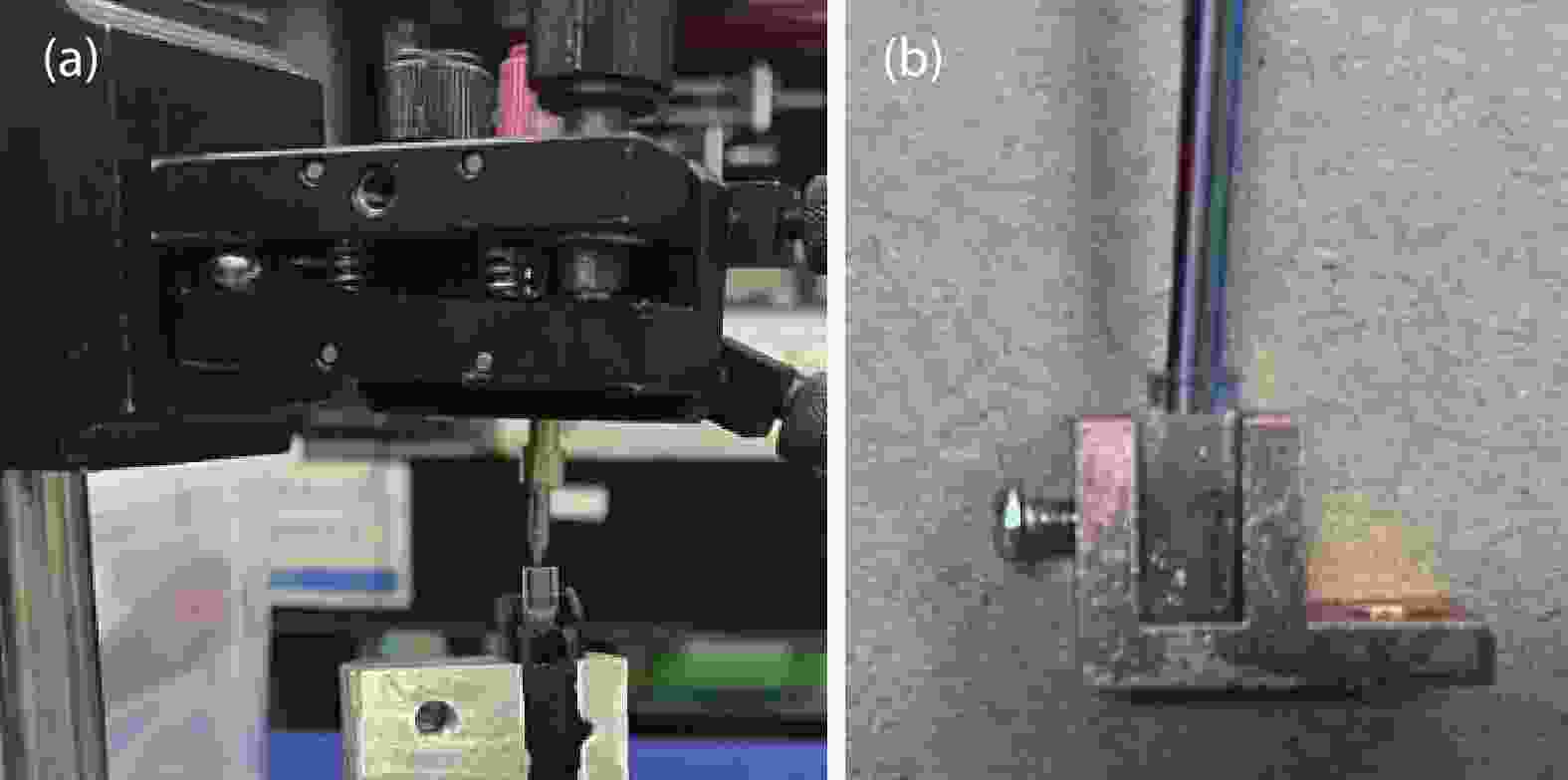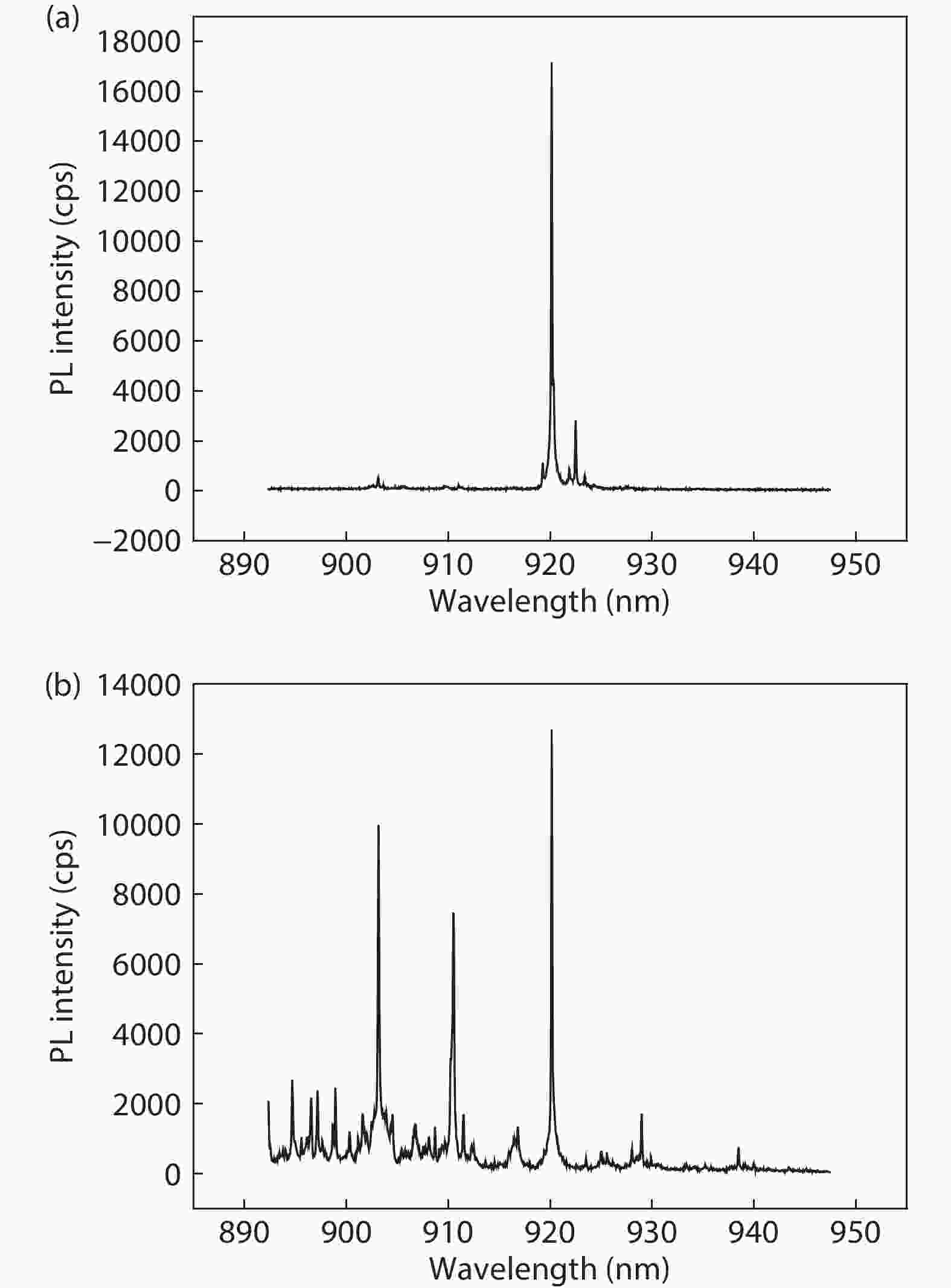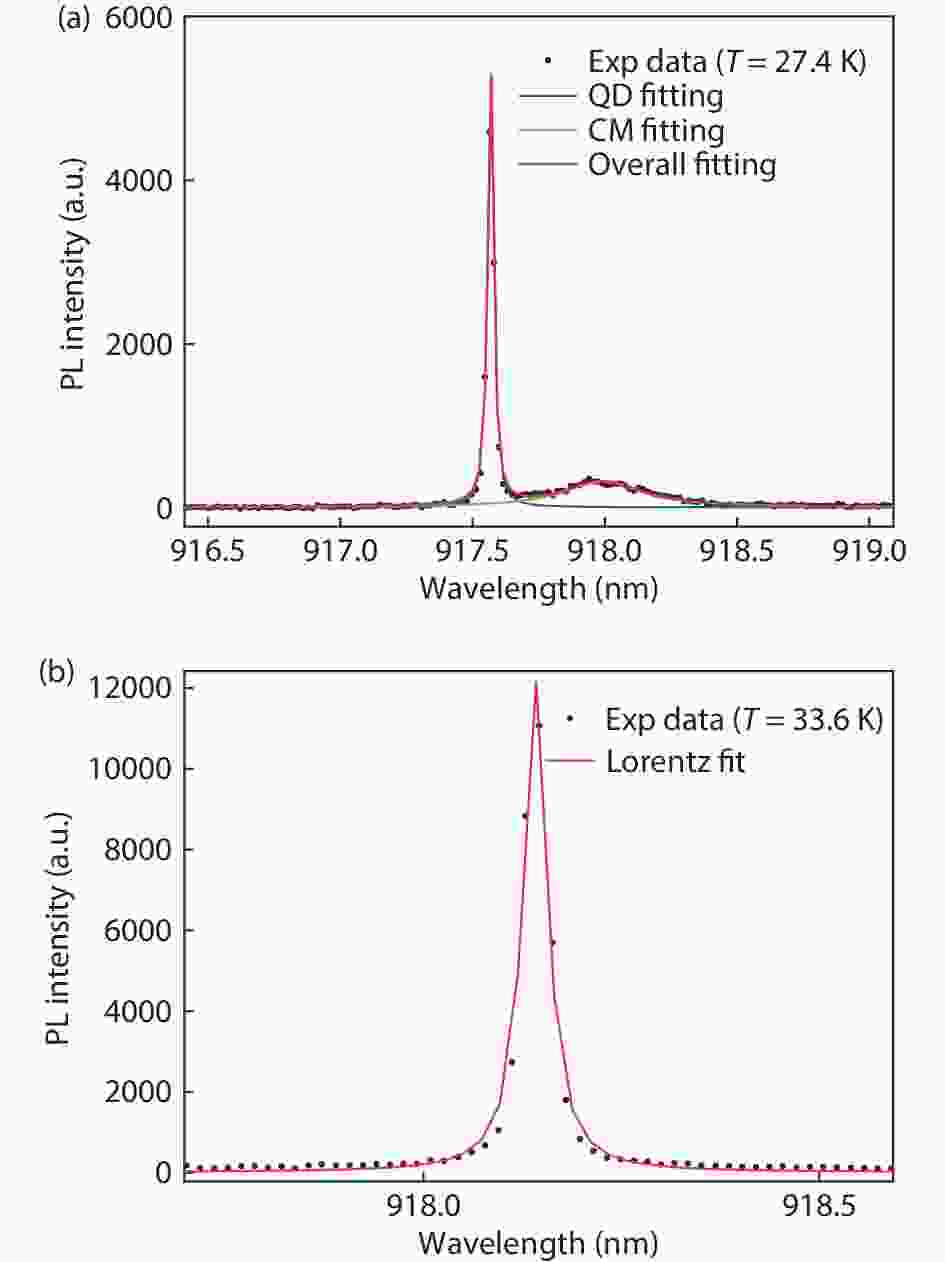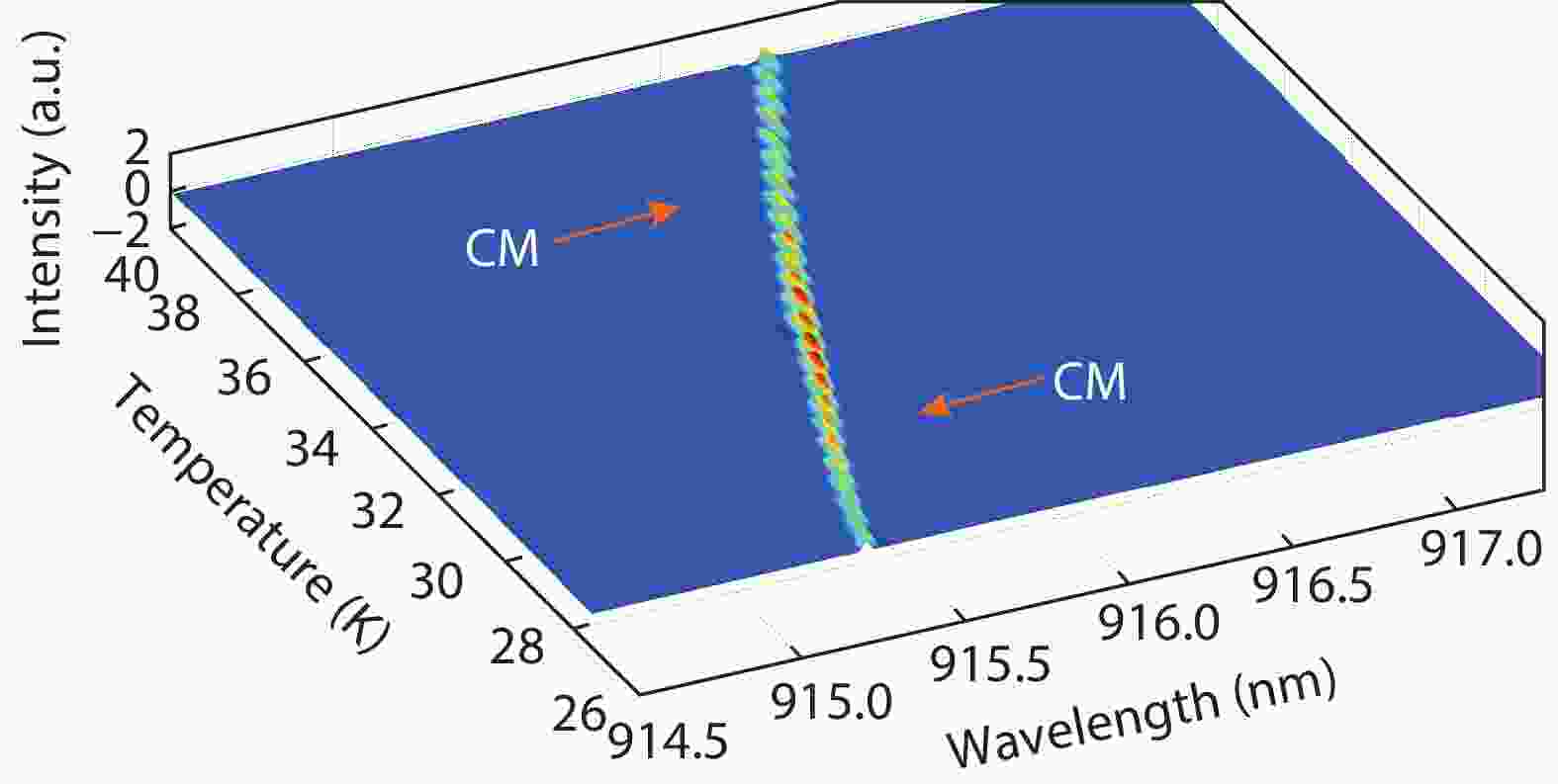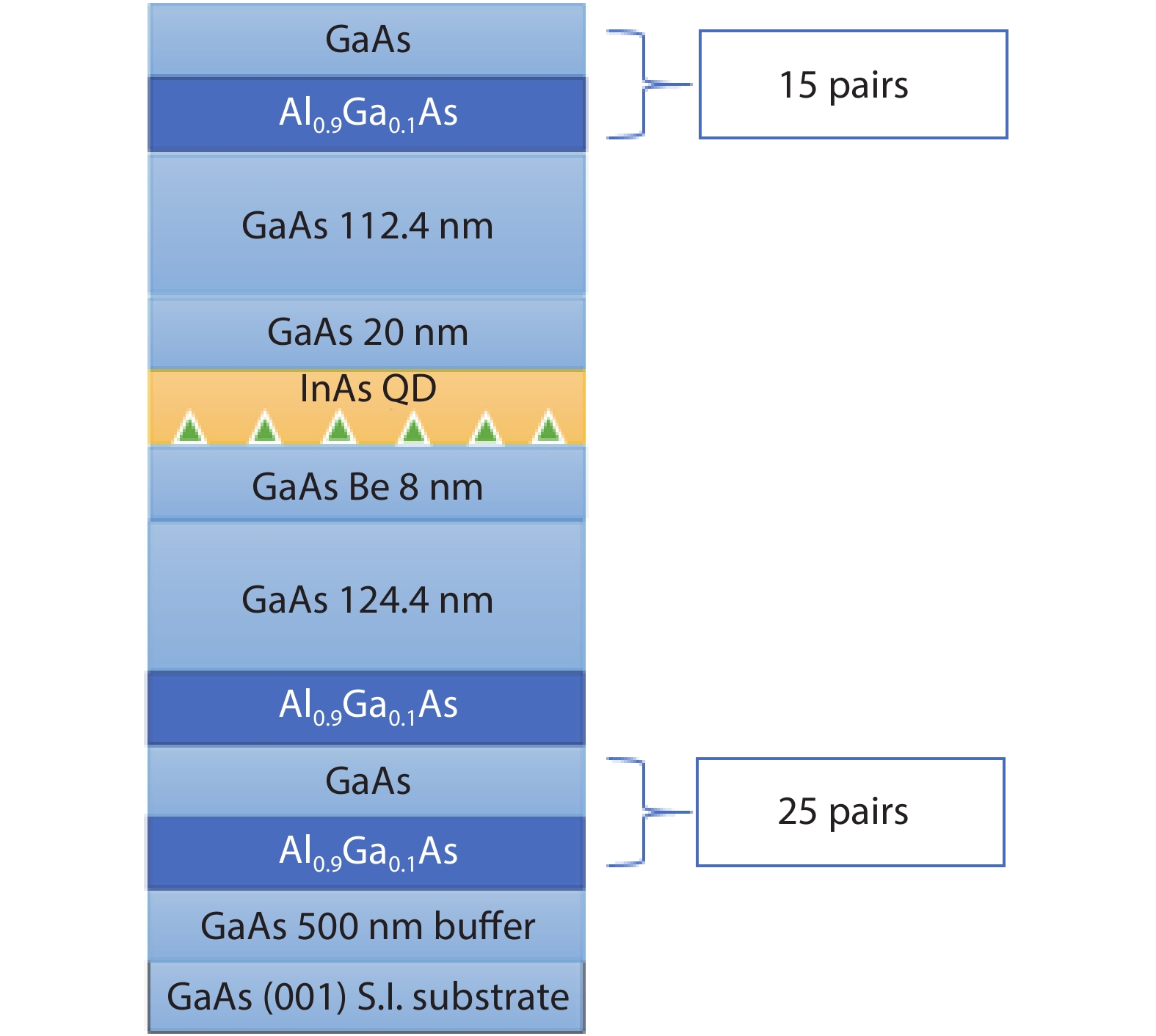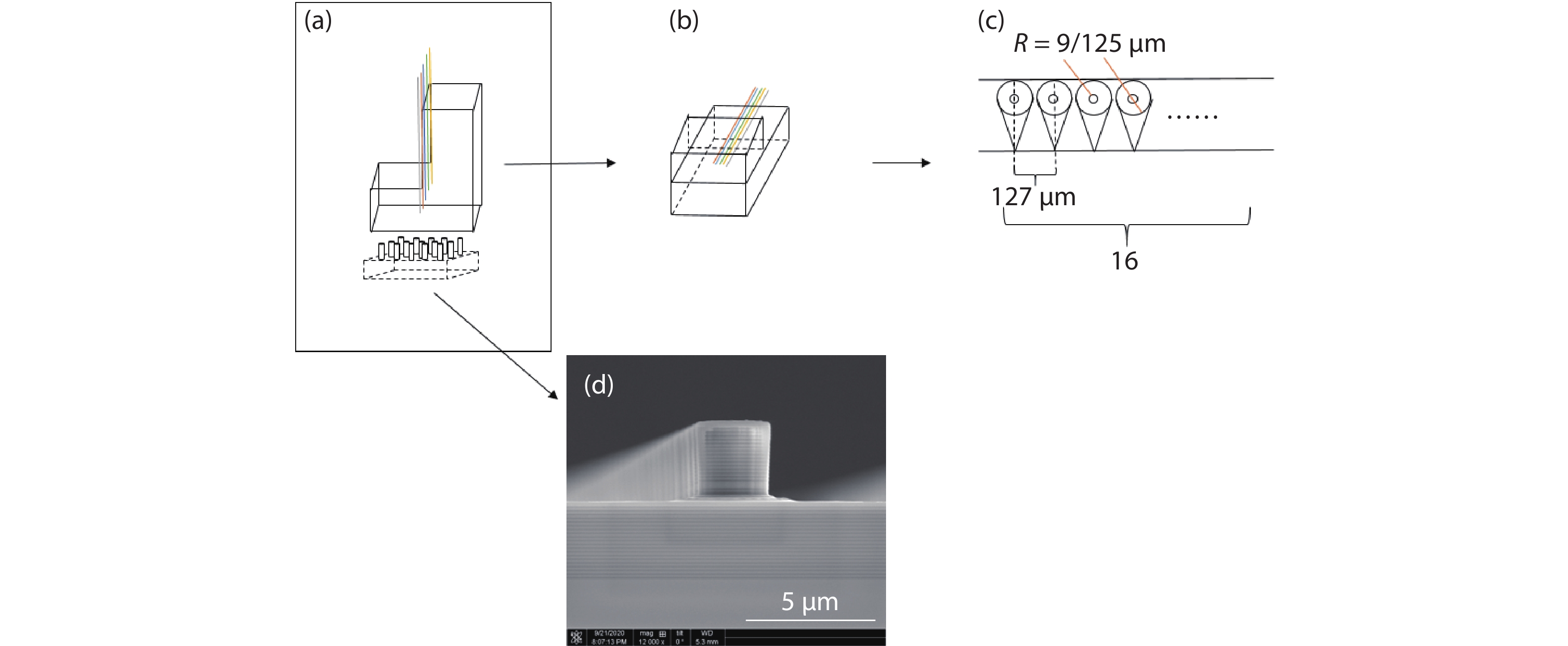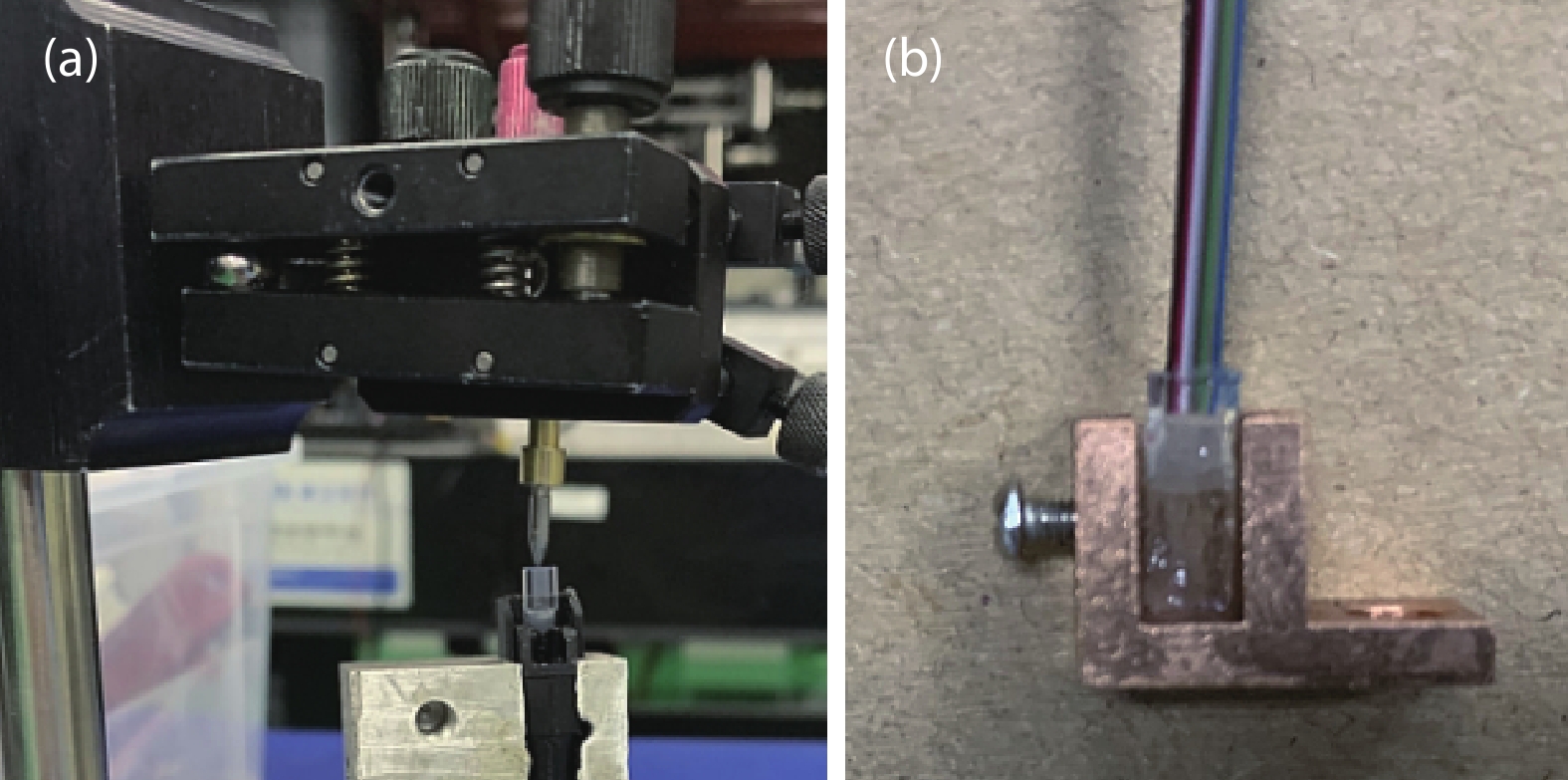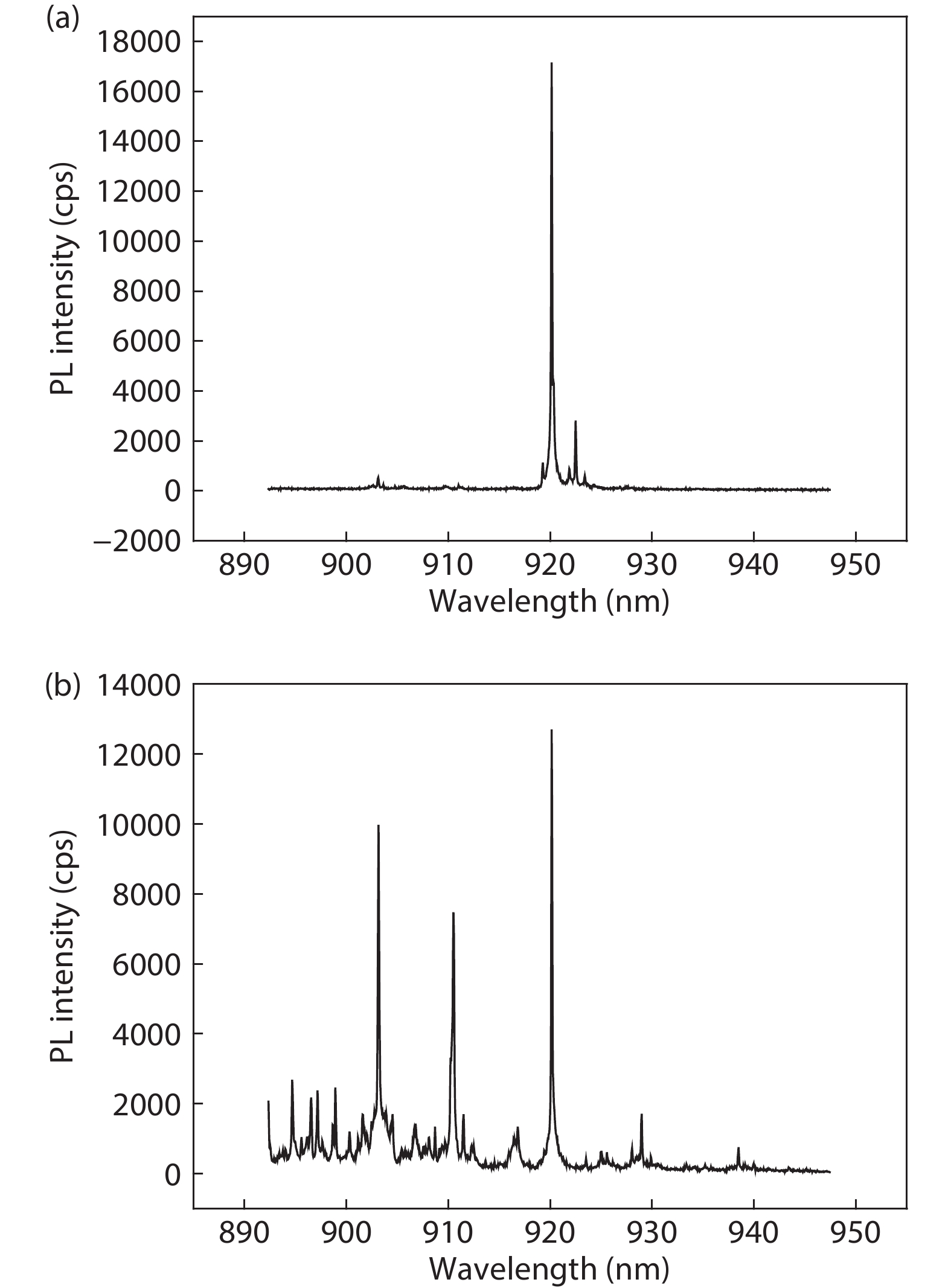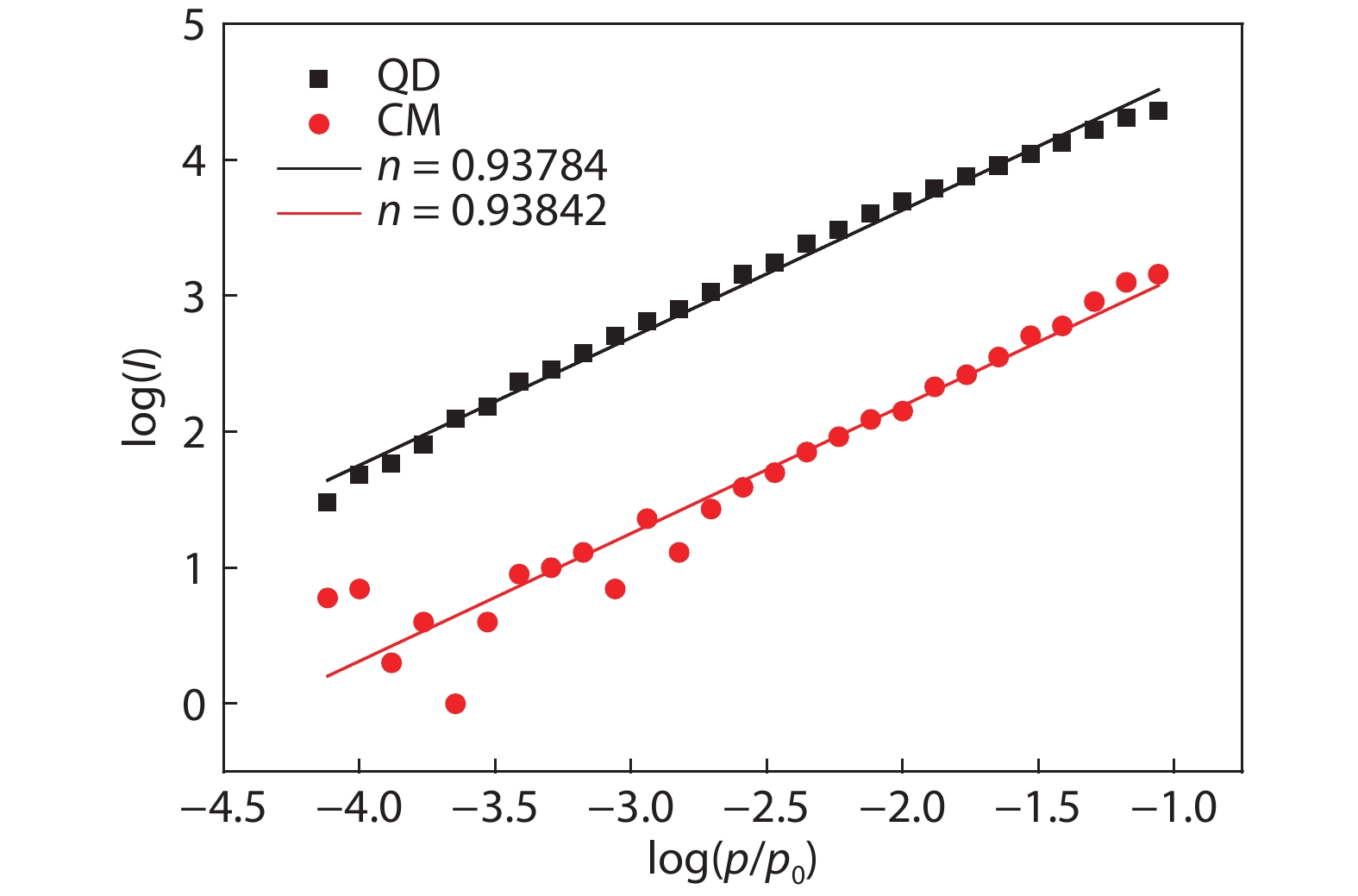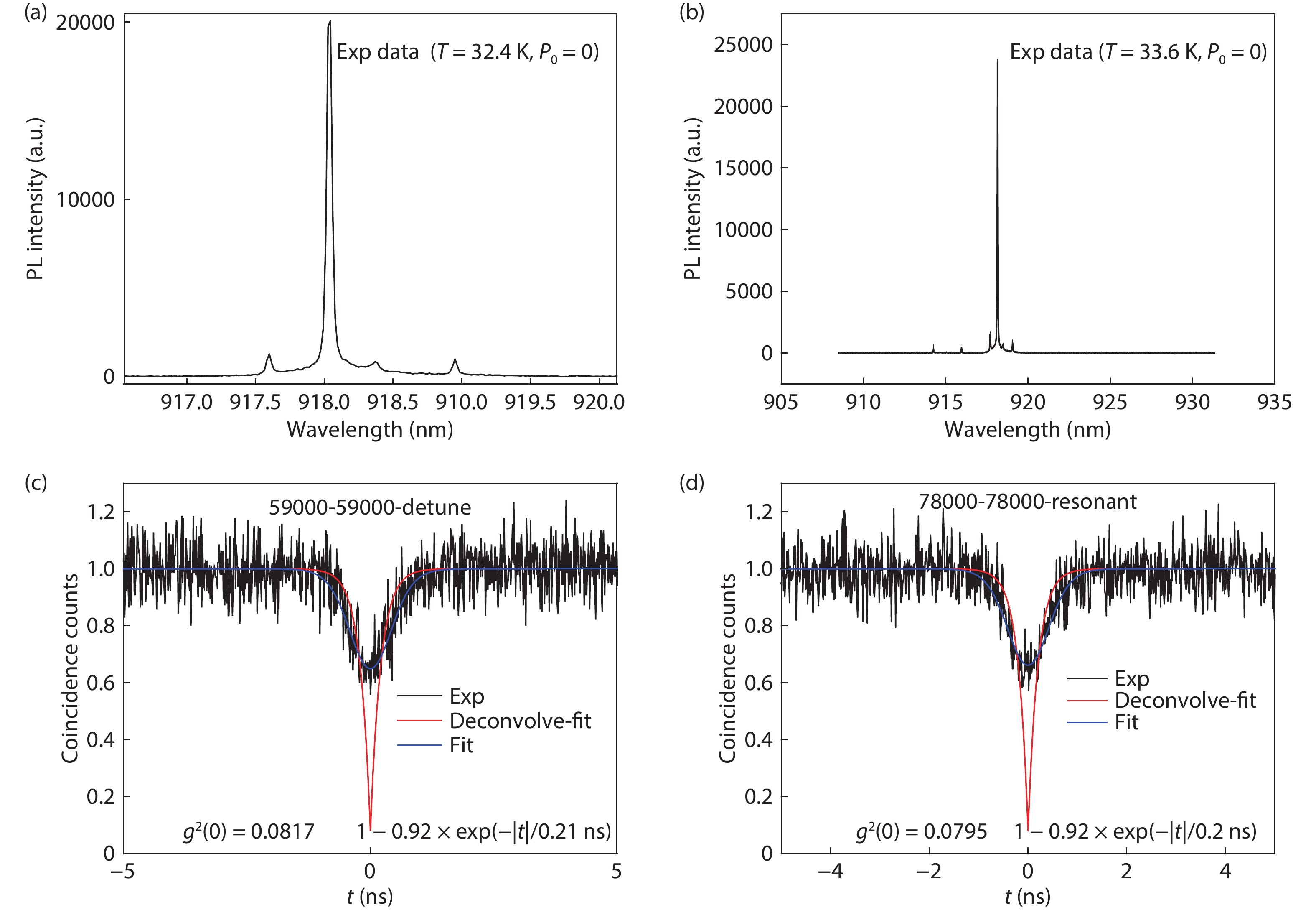| Citation: |
Yao Chen, Shulun Li, Xiangjun Shang, Xiangbin Su, Huiming Hao, Jiaxin Shen, Yu Zhang, Haiqiao Ni, Ying Ding, Zhichuan Niu. Fiber coupled high count-rate single-photon generated from InAs quantum dots[J]. Journal of Semiconductors, 2021, 42(7): 072901. doi: 10.1088/1674-4926/42/7/072901
Y Chen, S L Li, X J Shang, X B Su, H M Hao, J X Shen, Y Zhang, H Q Ni, Y Ding, Z C Niu, Fiber coupled high count-rate single-photon generated from InAs quantum dots[J]. J. Semicond., 2021, 42(7): 072901. doi: 10.1088/1674-4926/42/7/072901.
Export: BibTex EndNote
|
Fiber coupled high count-rate single-photon generated from InAs quantum dots
doi: 10.1088/1674-4926/42/7/072901
More Information-
Abstract
In this work, we achieve high count-rate single-photon output in single-mode (SM) optical fiber. Epitaxial and dilute InAs/GaAs quantum dots (QDs) are embedded in a GaAs/AlGaAs distributed Bragg reflector (DBR) with a micro-pillar cavity, so as to improve their light emission extraction in the vertical direction, thereby enhancing the optical SM fiber’s collection capability (numerical aperture: 0.13). By tuning the temperature precisely to make the quantum dot exciton emission resonant to the micro-pillar cavity mode (Q ~ 1800), we achieve a fiber-output single-photon count rate as high as 4.73 × 106 counts per second, with the second-order auto-correlation g2(0) remaining at 0.08.-
Keywords:
- single-photon source,
- fiber-output,
- high count rate
-
References
[1] Kroutvar M, Ducommun Y, Heiss D, et al. Optically programmable electron spin memory using semiconductor quantum dots. Nature, 2004, 432, 81 doi: 10.1038/nature03008[2] Cade N I, Gotoh H, Kamada H, et al. Optical characteristics of single InAs/InGaAsP/InP(100) quantum dots emitting at 1.55 μm. Appl Phys Lett, 2006, 89, 181113 doi: 10.1063/1.2378403[3] He Y M, He Y, Wei Y J, et al. On-demand semiconductor single-photon source with near-unity indistinguishability. Nat Nano, 2013, 8, 213 doi: 10.1038/nnano.2012.262[4] Faraon A, Fushman I, Englund D, et al. Coherent generation of non-classical light on a chip via photon-induced tunnelling and blockade. Nat Phys, 2008, 4, 859 doi: 10.1038/nphys1078[5] Sebald K, Michler P, Passow T, et al. Single-photon emission of CdSe quantum dots at temperatures up to 200 K. Appl Phys Lett, 2002, 81, 2920 doi: 10.1063/1.1515364[6] Shan G C, Yin Z Q, Shek C H, et al. Single photon sources with single semiconductor quantum dots. Front Phys, 2014, 9, 170 doi: 10.1007/s11467-013-0360-6[7] Gazzano O, de Vasconcellos S M, Arnold C, et al. Bright solid-state sources of indistinguishable single photons. Nat Commun, 2013, 4, 1425 doi: 10.1038/ncomms2434[8] Buckley S, Rivoire K, Vučković J. Engineered quantum dot single-photon sources. Rep Prog Phys, 2012, 75, 126503 doi: 10.1088/0034-4885/75/12/126503[9] Lodahl P, van Driel A F, Nikolaev I S, et al. Controlling the dynamics of spontaneous emission from quantum dots by photonic crystals. Nature, 2004, 430, 654 doi: 10.1038/nature02772[10] Ma Y, Kremer P E, Gerardot B D. Efficient photon extraction from a quantum dot in a broad-band planar cavity antenna. J Appl Phys, 2014, 115, 023106 doi: 10.1063/1.4861723[11] Fischbach S, Schlehahn A, Thoma A, et al. Single quantum dot with microlens and 3D-printed micro-objective as integrated bright single-photon source. ACS Photonics, 2017, 4, 1327 doi: 10.1021/acsphotonics.7b00253[12] Miyazawa T, Takemoto K, Sakuma Y, et al. Single-photon generation in the 1.55-μm optical-fiber band from an InAs/InP quantum dot. Jpn J Appl Phys, 2005, 44, L620 doi: 10.1143/JJAP.44.L620[13] Takemoto K, Takatsu M, Hirose S, et al. An optical horn structure for single-photon source using quantum dots at telecommunication wavelength. J Appl Phys, 2007, 101, 081720 doi: 10.1063/1.2723177[14] Purcell E M. Spontaneous emission probabilities at radio frequencies. Phys Rev, 1946, 69, 681[15] Rayleigh L. CXII. The problem of the whispering gallery. Lond Edinb Dublin Philos Mag J Sci, 1910, 20, 1001 doi: 10.1080/14786441008636993[16] Kors A, Fuchs K, Yacob M, et al. Telecom wavelength emitting single quantum dots coupled to InP-based photonic crystal microcavities. Appl Phys Lett, 2017, 110, 031101 doi: 10.1063/1.4974207[17] Chang W H, Chen W Y, Chang H S, et al. Efficient single-photon sources based on low-density quantum dots in photonic-crystal nanocavities. Phys Rev Lett, 2006, 96, 117401 doi: 10.1103/PhysRevLett.96.117401[18] Claudon J, Bleuse J, Malik N S, et al. A highly efficient single-photon source based on a quantum dot in a photonic nanowire. Nat Photon, 2010, 4, 174 doi: 10.1038/nphoton.2009.287x[19] Ma B, Chen Z S, Wei S H, et al. Single photon extraction from self-assembled quantum dots via stable fiber array coupling. Appl Phys Lett, 2017, 110, 142104 doi: 10.1063/1.4979827[20] Li S L, Chen Y, Shang X J, et al. Boost of single-photon emission by perfect coupling of InAs/GaAs quantum dot and micropillar cavity mode. Nanoscale Res Lett, 2020, 15, 145 doi: 10.1186/s11671-020-03358-1 -
Proportional views





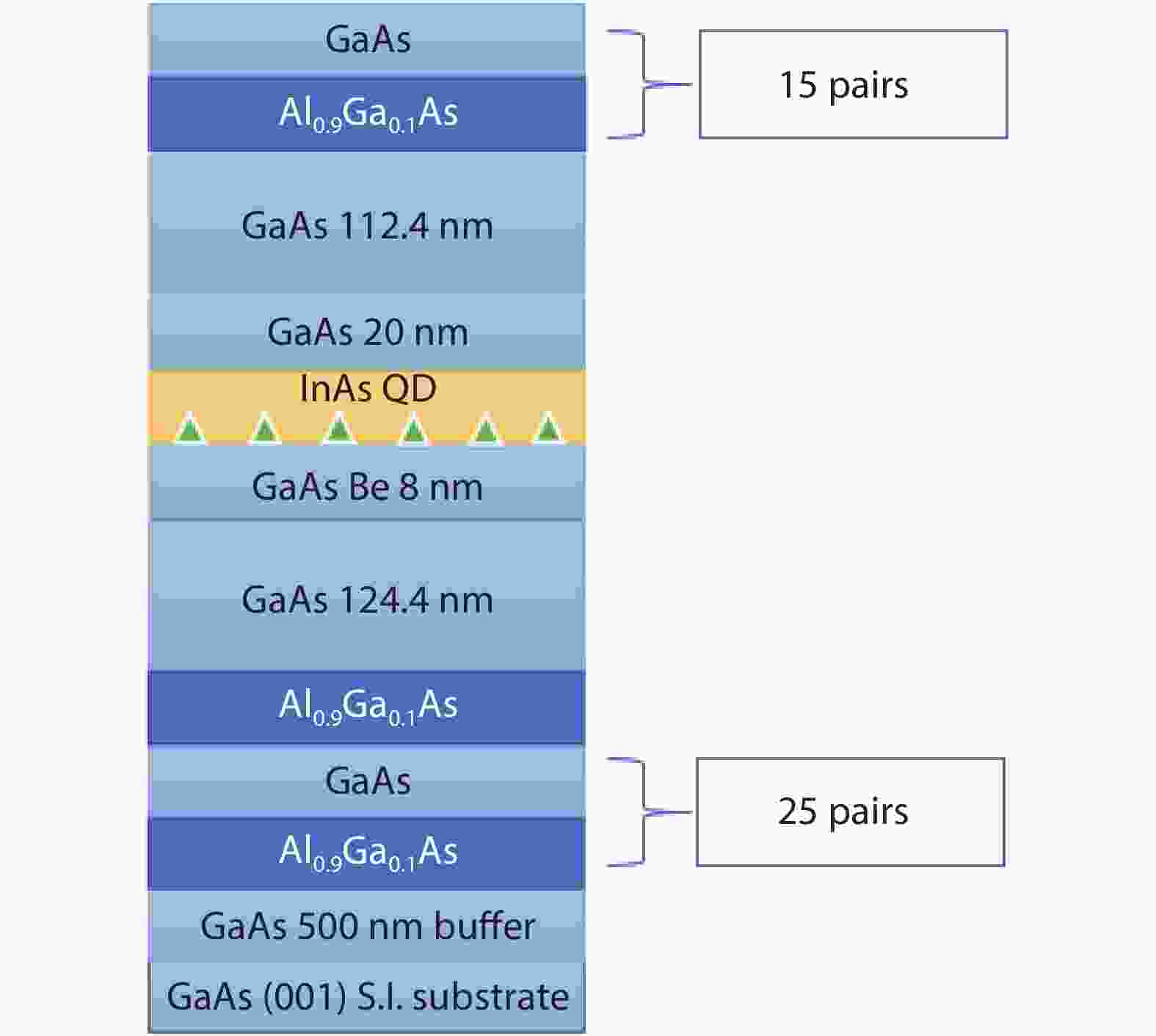
 DownLoad:
DownLoad:


